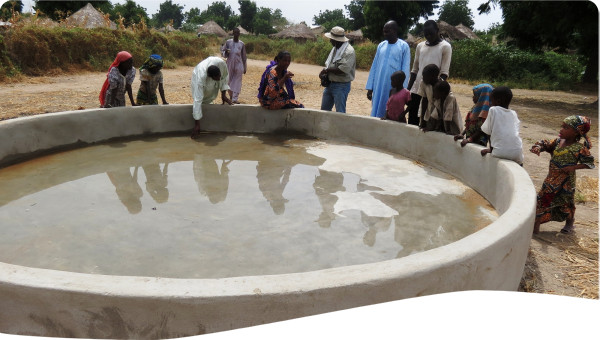The Toledo River basin is increasingly contaminated due to unsustainable agricultural practices, Action was taken through a UNESCO-IHP project aiming to perform an integrated environmental assessment of agricultural and farming production systems located in the Toledo River Basin. By using a multi-criteria approach, it was possible to highlight the interactions and use of natural capital, human-driven resources, and ecosystem services supporting agricultural and farming production systems.
The Toledo River basin is located in the south-western portion of Paraná state in Brazil and has an area of about 92 km2. Its water represents an important resource, exploited to supply 40% of the population of the town of Toledo (117 thousand inhabitants). The Toledo River basin plays an important role, also because of its contribution to the reservoir of the Itaipu Binacional dam. Underlain by the Guarani aquifer, the Toledo River basin has a very high potential for groundwater use.
The basin is characterized by intensive agricultural and farming production processes, among which the most important are soybean corn and pig production systems. The basin comprises 195 farms, of which 47 include pig production activities.
The soybean production is very important for the local economy but it also contributes to water pollution problems. The total cropped area covers about 75,000 ha.
Most of the manure produced by pig production systems is used to fertilize soil with little or no treatment. Such a practice generates a set of environmental impacts due to the excess manure produced in this region. Soybean-corn production systems are frequently fertilized with manure and they represent an important cropping system in the Toledo River basin. These crops are also related to the groundwater pollution due to a massive use of agrochemicals.
A UNESCO-IHP project involving Brazilian and Italian institutions was carried out since 2005 (a study completed in 2013).
The main goals of the project were: (a) to understand the hydrologic relationships between control and response variables in groundwater systems under the impact of climate change and human activities; (b) to identify mitigation and adaptation measures for groundwater management under those impacts; (c) to evaluate hydrological measures in terms of replicability, sustainability, impacts of both global and regional climate change, and equality in access to groundwater, both in quantitative and qualitative terms.
In addition, the aim was to perform an integrated environmental assessment of agricultural and farming production systems located in the Toledo River Basin. An integrated assessment framework was implemented by using the following methods: Energy Synthesis, Embodied Energy Analysis, Material Flow Accounting, Life Cycle Assessment, Ecological Footprint, Water Footprint, and Carbon Footprint.
Input resources (water, material, energy, and money) invested in supporting such production systems were evaluated with the final goal of calculating a large set of multi-criteria indicators useful to describe the environmental performance and sustainability of the production systems at farm and basin level. Ecological footprint, water and carbon footprints were also assessed. The multi-criteria approach used in this study provided useful information about the interactions and use of natural capital, human-driven resources, and ecosystem services supporting agricultural and farming production systems in the Toledo River basin (Brazil). The outcome of the project provide for a useful benchmark for management and future investigations.
The analysis of three alternative scenarios explored the potential environmental impacts associated with different options of natural resource management in the Toledo River basin.
The multi-criteria assessment framework implemented in this study and the related set of indicators provided a benchmark for future investigations as well as a useful support to local managers and policy makers committed to developing environmental policies based on sustainable management of agroecosystems. Better integration between agricultural and farming activities in the Toledo River basin is worth further investigation by means of both field and modeling studies. Crucial factors to investigate are the intensive use of water, agrochemicals and the concentration of manure, all related to the high intensity of agricultural and farming activities in the basin.
The multi-criteria approach used provided useful information about the interactions and use of natural capital, human-driven resources, and ecosystem services supporting agricultural and farming production systems in the Toledo River basin.
The outcomes of the study will support local managers and policy makers committed to develop management schemes and environmental policies based on the sustainable management of agro-ecosystems.
Investigating the behaviour of a single process and merely seeking the maximization of only one parameter (energy efficiency, production cost, jobs, etc.) is unlikely to provide sufficient insights to properly inform policy making.
Quantifying the direct and indirect flows of water, materials, energy and finance to and from investigated systems made possible a deeper understanding of their production processes as well as a more detailed picture of their relationships with the surrounding environment.
 Case studies
Case studies
